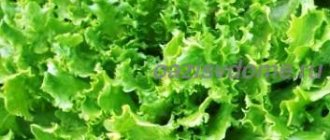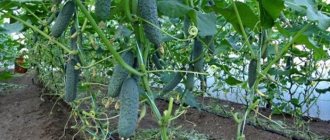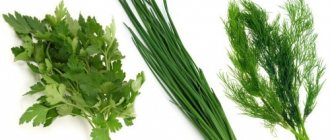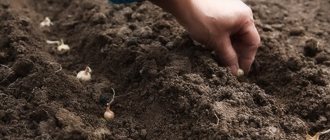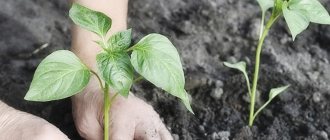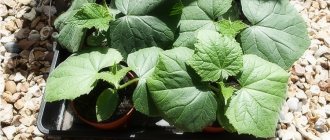Each type of lettuce has unique characteristics that are important to take into account when planting it. Thus, the leaf type of crop is considered one of the quicker ripening species, ripening within 30 days: it is enough just to scatter the seeds in rows into the ground to a depth of about 1 cm, moisten the soil and cover it with a transparent film, right before the first shoots appear. Within a month after germination, lettuce can be harvested - usually, the crops are pulled out with roots, which are then cut off.
Preparing seeds before planting
Each seed consists of a supply of nutrients and an embryo, which are located under a dense skin. The larger the seed, the more nutrients it contains.
In order for the seedlings to be friendly and diseases to be extremely rare, the seeds must be sorted by size. Deformed or damaged specimens are immediately thrown away.
To speed up the germination of seeds more than twice, they need to be wetted.
Thus, the essential oils that inhibit germination are washed away with water and, ultimately, nothing hinders the growth of the seed.
Experienced gardeners soak the seeds in warm water – 18-22°C, which is saturated with oxygen or air using a compressor. This technique is called bubbling. This process accelerates the emergence of seedlings and disinfects the seeds. It is stopped when 2 to 5% of the seeds germinate. The duration of bubbling of lettuce seeds is 10-12 days.
Important! Iceberg lettuce is low-calorie: 15 kcal per 100 grams. It is ideal for diets and fasting days.
germination
Growing in open ground
Growing lettuce in the countryside in open ground is possible with seeds or seedlings. Planting seeds in open ground and further caring for plants is exactly the same as when cultivating lettuce in a greenhouse. As for seedlings, you should adhere to certain recommendations.
Since head lettuce does not tolerate transplantation well, agricultural technology for its seedlings is produced in peat tablets, which must be purchased in sufficient quantities at a specialized store. Each tablet contains 2-3 seeds. In order not to be bothered by the preliminary preparation of seed material for sowing, you can take yeasted seeds that have a shell of a fertilizer complex. After all the peat tablets are filled, they are placed in a container, which is left in a room with a temperature no higher than 180C. As a rule, germination does not take much time; shoots appear within 4-5 days.
Before transferring seedlings to the site, it is necessary to harden them
Further cultivation can be carried out at home, where the temperature is higher, but not higher than 250C. That is, in general, containers with plants can be placed on a windowsill or on an unheated balcony. The most suitable for planting in open ground will be seedlings with a height of 8-10 cm, which corresponds to 4-5 leaves. Iceberg lettuce usually grows to this state in 8-9 weeks. But in this form, plants can be planted in early spring, when it is not too hot outside, but the soil has already thawed and the threat of frost has passed
Closer to summer, you should pay attention to smaller seedlings, the growth period of which is approximately 3 weeks, which will allow the lettuce to better tolerate transplantation into open ground, as well as optimize for new conditions and high ambient temperatures
Before transferring seedlings to the site, it is necessary to harden them. To do this, containers with seedlings are taken out into the open air for a couple of days. The shoots are planted in a well-dug bed into which fertilizer and humus have been added. The transfer is carried out according to the same scheme as when growing iceberg lettuce in a greenhouse. If young plants are planted early enough, they are covered with agrofibre or perforated film. The covering material is removed after approximately four weeks. But it is necessary to ensure that the temperature under the film does not rise above 250C, as this will negatively affect the formation of the head of cabbage, and its cultivation will be very difficult.
Planting of shoots is carried out on a well-dug bed
Caring for plants is the same as when growing in a greenhouse. Those. Cultivating lettuce in open ground requires watering, loosening, weed removal and fertilizing. If you don’t forget to take the simplest care of your lettuce, you will soon be able to enjoy the delicious, crunchy leaves of this magnificent plant. It is necessary to harvest the salad early in the morning, when the sun has not yet dried the dew drops, then the salad will remain juicy and tasty for a long time.
Iceberg: sowing in the ground and seedling method, or get a treat without the hassle
Undoubtedly, planting lettuce in open ground with grown seedlings is simpler and easier. But this is only on one side. On the other hand, there is the need to arrange a heated greenhouse or grow lettuce on a windowsill. Agree, this is not the best option, besides, these are not only small plants that lack warmth and light, but also sand and excess moisture in the house.
Growing lettuce in open ground: positive aspects
An excellent option is to sow seeds in open ground. It has the following advantages:
- simplicity. To do this, you do not need to prepare a substrate, cups or seedling cassettes. Everything can be done right away in the garden;
- efficiency of cultivation. Technical ripeness of Iceberg lettuce is achieved in 45-50 days. Add here another 10-14 days, during which your family will have time to eat it - and you can safely sow again!;
- ease of care for sown seeds. In the garden bed, it is easier to cover the seeds with spunbond (through which you can water!) or greenhouse film than to build a greenhouse on the windowsill.
So, we have become familiar with the positive aspects of sowing lettuce in open ground. Where to start working in the garden? From purchasing seeds!
Attention! Buy seeds from a specialty store. This is the only way you will be protected from fakes and get an excellent harvest.
Sowing process in several steps
In order to sow Iceberg in the garden, you need to find a place for it. The salad simply tolerates direct sunlight, so this will not be a problem. But it’s worth taking care of the soil. It should be light, well structured, not sour. Otherwise, special medications will help correct the problem. To get started you need:
- prepare the bed, that is, dig it up, compact it a little, water it and make grooves around the perimeter to make it easier to water adult plants and the water does not go beyond the bed;
- make grooves in the bed 2-2.5 cm deep and the same width. The distance between the grooves is 15-20 cm if you grow lettuce for greens, 30-40 cm if you want to get full heads of cabbage. Row furrows can be made with the corner of a hoe or shingles by drawing lines on the ground with pressure;
- sow seeds. The best option is panned ones, which are larger in diameter, have a supply of nutrients, and are better visible. If the seeds are ordinary, you can mix them with river sand. You cannot sow thickly;
- Carefully level the grooves and compact the soil;
- spill the garden bed.
If you sow seeds in early spring and the temperature is low, cover the bed with covering material. When the temperature rises to 15-17°C, the bed should be opened.
Iceberg lettuce. Growing in a container on the balcony
Iceberg is my single favorite type of lettuce. It is not bitter, has its own taste, not like salad, it is dense and crispy. By the way, even if Iceberg didn’t set a head of cabbage, it’s still just as delicious! Therefore, I can’t wait for summer and grow it in the spring on the balcony.
Last year I grew Iceberg lettuce in the garden without any problems, and I’ll definitely plant it this year too. But I really hope to get some heads of cabbage on the balcony! I want to share with you how it will work out.
The iceberg on the left is a head of cabbage, on the right - it has not tied a head of cabbage
- it is susceptible to rot (but there are resistant species)
- and slugs love him very much.
Slugs definitely won’t get onto the balcony, but we’ll check for rot.
Last year, out of 14 pieces in my garden bed, one got rot; Well, the slugs just didn’t have time, I ate it faster. Iceberg grows in open ground for about 1.5 months, the most important thing is not to overexpose it in the ground so that it does not go into arrows or become bitter. The bitterness is barely noticeable, but it will be there, so you shouldn’t be greedy and cut off the heads of cabbage, 10-15 centimeters in diameter. If you cut it carefully right down to the sprout, then the remaining stem may produce more small sprouts, delicious))
I have often read that Iceberg loves cool weather, but does not grow in the heat and does not set heads. In past years, I didn’t delve into this; I planted it in June (when there was time), i.e. He grew up in the very heat and sun. The photo above shows plants from July 21st. He tied up all the heads of cabbage and didn’t shoot any arrows. I probably shouldn’t have studied the theory this year; now it really confuses me.
Let's get back to my salad on the balcony. I have seeds from the Russian vegetable garden - “Iceberg Arctic” lettuce. I took 3 pieces, they all sprouted in 3 days. I immediately planted each seed in a separate small container, so as not to disturb it once again during transplantation.
Lettuce seeds hatched
Lettuce grows very quickly. Just at cosmic speed. The photo shows that a week had passed, and he was already about 3 cm tall! Although he stood under the phytolamp, he still reaches up.
A week later
Head lettuce requires a larger area and volume to grow compared to leaf lettuce. That’s why I planted my Iceberg in 5 liter flower pots. Well, I planted whatever was at hand (and thanks again to the crazy cats, now I have a lot of empty flower pots).
So, on March 30, the lettuce came out, and on April 15, it was transplanted into pots and put on the balcony. That is, in 2 weeks the lettuce outgrows and needs to be replanted deeper. Practice has shown that head lettuce must be frequently pruned during the growth process, otherwise it begins to collapse.
Three
When transplanting, the substrate was shaken and planted in normal soil. It’s +15 on the balcony, even though it’s glazed. But now it’s cold outside (0 degrees) and cloudy, and the best places are already taken. The big one grows well, the small ones grow more slowly and in spurts.
20 days have passed
Advantages and disadvantages
The advantages of the salad are:
- leaves are dense and crispy;
- shelf life longer than other salads - up to 3 weeks;
- has its own taste, unlike salad;
- The harvest can be harvested from early spring to late autumn.
Flaws:
- requires a larger area for growth than leaf lettuce;
- susceptible to rot (there are resistant varieties);
- Snails and slugs love it very much.
Information about Iceberg lettuce from benefits to storage is presented in the video below:
Agricultural technology for planting and growing seeds
Sowing seeds in open ground
In the first half of April, the bed is prepared. They loosen well and cover with covering material so that the earth warms up. When above-zero temperatures have established, at the end of April, at the beginning of May, rows are made in the garden bed 3 cm deep, every 40 cm. The soil is compacted and watered. Seeds are sown at a distance of 20-30 cm and covered with 1 cm of soil.
Iceberg Lettuce Seeds
The ridge is covered with film. Shoots should be expected in 6-14 days. The lower the temperature, the longer the germination.
Sowing seedlings
It is better to use peat or plastic cups. When transplanted into open ground, the root structure is not disturbed, and the crop takes root faster.
The soil is used from the store or from the site, from the site of future planting. The soil in the cups is slightly compacted and 2-3 seeds are sown and 1 cm is poured from above. Spray with water and cover with film to retain moisture and heat.
Before germination, maintain a temperature of +16+17 degrees for 4-5 days, then you can raise it to +25 degrees. After 3-4 weeks, in mid-May, when the plant has 4-5 main leaves, it is transplanted into open ground.
3-5 days before the planned transplantation, the seedlings must be hardened off. During the day, take it out of the house into the street in partial shade, in a quiet place, without wind and drafts. May get burned in sunny places.
3-5 days before planting in the ground, seedlings need to be hardened
Transplanting seedlings into open ground
In a prepared, loose bed, rows of holes are made every 40 cm. In rows, the distance between holes is 20-30 cm.
To make neat, even holes of the required depth and diameter, you can use a wide, pointed stake. The soil in such holes will immediately become compacted.
Water the seedlings and holes well. If the plant is removed from the cups, then by lightly tapping or pressing on the container. In this case, peat cubes are good, from which you do not need to remove the plant and can be planted directly into the ground.
Lightly sprinkle the seedlings with soil. It is not worth deepening the root system, since it has a superficial type of growth. By planting seedlings at different stages of growth, you can extend the harvest period. Stronger shoots will yield faster, weaker ones later.
Sowing before winter
Another option is to sow in late fall. It is good because the spring lettuce ripens 10-15 days earlier, it is larger and stronger. But there is a risk of freezing some of the seeds. Therefore, they increase the number of seeds for sowing before winter by 1.5-2 times.
When the outside temperature is within +1 +3 degrees, seeds are planted in the prepared bed. They are buried by 1-1.5 cm. With this regime, the seeds will safely go away before winter and will not germinate. The bed is covered with dry grass, leaves and other covering material. They open in the spring, when it gets warmer.
Basic care consists of fertilizing, watering, loosening, weeding and thinning.
- Feeding. Perform 1-2 times, before sowing and during the formation of heads of cabbage. The best option is to combine it with watering and feed with organic fertilizers. A solution of mullein or bird droppings is suitable for this (1-2 tablespoons per 10 liters).
- Watering. Regular moderate watering is required, every other day or once a week, abundant. If the soil is dry, the heads of cabbage will not form well; if it is wet, there is a risk of rot. After the ovaries form, watering is reduced.
- Loosening and weeding. Periodic loosening is shallow so as not to damage the roots. The first is 3-4 weeks after sowing. At the same time, weeding is carried out.
- If the seedlings are thickened, thinning is carried out in two stages. Without doing this work on time, the head of cabbage will form poorly. The first time in the phase of one true leaf, shoots are preserved after 4-5 cm. The second time in the phase of 6-7 true leaves. Leave plants every 20-30 cm.
In addition, the plant may be susceptible to diseases and pests.
When an iceberg is affected by tip rot, use a solution of calcium nitrate
At the end of growth, with a lack of calcium, a disease called blossom end rot can occur inside the stems. For prevention, spray once a week with a solution of calcium nitrate (100-150 grams per 12 liters of water).
If infested with cruciferous flea beetles, pour plenty of water and sprinkle with wood ash. Repeat the procedure after 3-4 days.
Diseases and pests
General recommendations for prevention:
- remove and destroy all plant debris;
- treat all potential foci of infection in a timely manner;
- clean and disinfect equipment and machinery;
- predict the flight of pests and set traps in time;
- observe crop rotation;
- observe storage regimes;
- choose varieties that are as resistant to diseases and pests as possible;
- do not plant in areas where the infectious agent was previously discovered.
Like any other garden crop, iceberg lettuce can be attacked by pests and various diseases.
| Pests | Control measures |
| Snails and slugs | The drug "Thunder". The granules are placed in places where pests accumulate. |
| Mice | They use mousetraps, poison for rodents. |
Insects:
|
|
Diseases:
|
|
| Apical rot | Occurs in stems due to calcium deficiency. For prevention, it is necessary to spray plants every week with a solution of calcium nitrate: in the ratio of 100-150 g of nitrate per 12 liters of water |
Care and harvesting
Caring for Iceberg lettuce plantings involves performing the following types of work:
- loosening the soil;
- weed removal;
- regular but moderate watering;
- timely application of fertilizers.
As for fertilizing the soil, you should use, first of all, complex preparations. To give lettuce leaves a spectacular crunch, you need to ensure that the fertilizer contains nitrogen, phosphorus, potassium, calcium, and magnesium.
45-80 days after planting the seedlings, it is already possible to partially harvest the lettuce. The cultivation of vegetables or individual heads of cabbage can be continued until a larger mass is obtained. The most optimal cutting period is when the head of cabbage reaches a diameter of 5-10 cm.
In order for the salad to be juicy and retain this property for a long time, cutting should be done only in the early morning, when drops of dew are still visible on its leaves.
The roots from the cut heads can be left in the ground and continue to be watered. After a while they will produce another small harvest of lettuce.
To keep the cut heads fresh and juicy longer, they must be kept in the refrigerator at a temperature of 3-5 0 C. With this storage method, Iceberg lettuce will not lose its quality for 7-10 days. To extend the shelf life, the vegetable should be wrapped in a damp cloth or placed in a closed vegetable container.
Well-equipped greenhouse
You need to grow greens in a properly equipped greenhouse. This should be a very bright, warm room that will be able to provide each bush with the necessary microclimate.
You can build the structure yourself. To do this, you first need to focus on the outer covering. Types of coating may include:
- polyethylene film. This is a relatively cheap and affordable material that is easy to use;
- glass. Glass rooms are very durable, reliable and warm;
- polycarbonate A material endowed with a number of favorable features.
To grow this salad, many gardeners prefer to build a film or glass version. The frame must be made of wood.
However, if we are talking about growing throughout the whole year, then you should give preference to polycarbonate. It is lightweight, retains heat well and is able to protect the crop from ultraviolet rays.
Iceberg
Iceberg lettuce looks more like cabbage than lettuce. It forms dense, compact heads of light and quite thick, amazingly juicy and crispy leaves. The mass of an iceberg head can exceed 1 kg, although in garden conditions they usually do not reach their maximum size. The taste of the salad is almost neutral, but no other salad is so delicious and crunchy.
Using iceberg lettuce in cooking
This is a universal salad that can be used in a mixture with other types, in perfect harmony with fish, meat, seafood, and ideally combined with sour cream sauces.
Iceberg lettuce planting dates
Iceberg is grown both through seedlings and usually using the method, but such salads produce a lower-quality harvest. Seeds for seedlings are sown 3 weeks before planting in the soil (before the beginning of April, sowing can only be done when transplanting into greenhouses and greenhouses), if necessary, sowing is repeated every 2 weeks during spring and summer. Only spring and pre-winter sowing is carried out into the soil.
The necessary conditions
For icebergs, it is necessary to provide bright lighting and nutritious, well-drained soils that are not highly acidic, into which full mineral fertilizer has been added in the fall or several weeks before planting. Iceberg loves night coolness (up to 18 °C) and does not respond well to daytime temperatures above 30 °C. Withstands frosts down to -6 °C.
Sowing iceberg lettuce in the soil
Pre-winter sowing is carried out in mid-autumn. Any organic and complete mineral fertilizers are applied to the soil, deep digging is carried out and the seeds are densely scattered in rows. Covering them with soil, the bed is protected from above with dry leaves.
Spring sowing is carried out after the soil has warmed up, when night temperatures do not fall below -6 °C. Seeds are sown no deeper than 1 cm, the crops are covered with non-woven materials or film on top and left until daytime temperatures rise steadily to 18 °C.
Growing through seedlings
Before sowing, the seeds need to be soaked. They are sown several seeds in small cups or peat pots. Germination should take place in cool conditions (up to 18 °C). After the first shoots appear, the plants are transferred to warm rooms, one strong sprout is left and grown to 8-10 cm, after which hardening begins. Icebergs are planted in a permanent place in a greenhouse or garden at three weeks of age, maintaining a distance of 30 to 40 cm between plants.
Specifics of caring for iceberg lettuce
For icebergs, it is very important to maintain constant humidity and protect the plantings from drafts. This plant will need not only loosening the soil every 3 weeks and weeding, but also fairly abundant watering. They should be uniform, without allowing even short-term drought during the period of active development
They should be uniform, without allowing even short-term drought during the period of active development.
The intensity of watering must be reduced from the moment heads begin to form, when the lettuce becomes extremely vulnerable to rotting. It is better to water the iceberg late in the evening. It is customary to apply fertilizers only on depleted soils 2 times, at the time of planting to improve establishment and at the beginning of head formation. But it is better to do without them and take care of timely preparation of the soil, because icebergs are prone to nitrate accumulation.
Harvesting and storage
Iceberg should be harvested as the heads ripen, early in the morning, cutting them out with a sharp knife and immediately removing a couple of outer leaves. This salad is stored in cool conditions (1-2 °C is optimal), the average shelf life of the heads is about 1 week. When stored in the refrigerator, first wrapped in a damp cloth and in bags, it can last up to 3 weeks.
The best varieties of iceberg lettuce
- early "Santarinas", "Lagunas", "Diamantinas", "Argentinas", "Gondar", "Galera";
- medium "Campionas", "Mirette" and "Fiorette".
Cutting and storage
45-90 days after sowing , when the diameter of the heads reaches 5-10 cm , cutting occurs.
To better preserve the juiciness of the leaf blade, the harvest is harvested early in the morning. Choose heads of cabbage of medium density. Young and loose ones are poorly stored, and dense, overripe ones are inferior in taste.
- Plastic container and close.
- In a damp cloth and in a bag.
Interestingly, after cutting the crop continues to grow . At the cutting site, new ovaries grow on the root neck. If desired, you can leave one for further growth.
Small heads of cabbage with tasty, crispy leaves of Iceberg lettuce are increasingly winning our taste preferences. Easy care, good preservation and the ability to grow this product from spring to late autumn make it suitable for planting it on your own plot.
The article will tell you how to grow Iceberg lettuce, how to achieve maximum yield, and most importantly, what is needed to properly care for the plant.
Growing seedlings
No matter what method of planting you choose, for better germination of the seeds you need to first soak them in warm water for a day. And the use of pelleted seeds (which is a shell of fertilizers) will give better germination
To provide your family with vitamin salad, it is better to grow it through seedlings.
It is better to use peat tablets for sowing seeds. Place 2-3 seeds in each tablet. Even if they all germinate, they will not interfere with each other.
Place the container with tablets in a cool place with a temperature of no more than 17 degrees. On the third day after sowing, the temperature is increased to 15-25 degrees. Water moderately. After 14 days, the seedlings will grow to 8-10 cm and 4-5 true leaves will appear.
Please note: before planting seedlings in the garden bed, you must harden them off.
When the lettuce seedlings are adapted to the outdoor temperature conditions, they can be planted in open ground on a previously prepared and fertilized bed.
Seedlings are planted in shallow holes at a distance of 30-40 cm from each other. You need to carefully place peat tablets with sprouts in them. After watering the plant, you need to sprinkle the root area with dry soil. The optimal temperature for the growth and development of vegetables is 25 degrees.
At night, the planting should be covered with agrofibre or film.
Features of culture
She is early in maturity. The plant forms a loose head of rounded large light green leaves weighing about 300-600 g.
It has a specific taste with a slight bitterness, similar to lettuce, but has a characteristic crunch when eaten.
An unusually healthy and tasty product is in demand in our country.
The plant is unpretentious, grows quickly and well in sunny areas. You can sow dry seeds directly into open ground, without treating for diseases, soaking and germination of planting material.
When and where to plant iceberg lettuce
Surely you will agree that the most delicious and healthy iceberg lettuce is the one picked from your garden. Moreover, its cultivation does not require great skills and experience from the gardener.
To ensure a continuous supply of salad greens to your table, the seeds are sown at several times. My experience shows that starting from April 15-20 in the middle zone, up to three sowings of salad crops can be done with an interval of two weeks. In the second half of summer, I managed to sow lettuce twice in open ground and twice in a greenhouse. So fresh salad greens are present in my family’s diet until the second half of October.
If you plan to sow lettuce at the earliest possible date, then choose a high place with loamy, well-structured soil with a high humus content.
This crop does not tolerate acidic soil and develops best when the soil acidity is 6-7 units. If you do not have the opportunity to systematically water the plants, then I do not recommend choosing sandy loam, light soil for cultivating this crop.
Iceberg lettuce reacts poorly to high night temperatures (above +18 degrees), which results in slower head formation. Iceberg grows poorly even if the daytime temperature exceeds +30 degrees.
Technological complex for growing lettuce
Reviews:
Svetlana Nevermind
writes: It’s scary how much they cut off. All this can be eaten if washed
Sasha Petrov
writes: Cool, I want a factory like this. several times less is possible)
Enniki-benniki
writes: how much do Finns earn from this salad, if one bag costs 1.5 euros!
Sergei Bondarchuk
writes: how can you prove it?
Krzionze Andrzej
writes: In recent years, the hydroponics method has been actively introduced into Russian agriculture. Despite the fact that doctors and researchers are increasingly declaring: mineral wool is a toxic material harmful to health. According to scientists, mineral wool fibers, crumbling and breaking, turn into caustic dust, causing diseases of the respiratory system, eyes, and digestive system. Moreover, the binding materials in mineral wool are phenol-formaldehyde or melamine-formaldehyde resins. They emit highly toxic formaldehyde and phenol, which destroy the human nervous system, and at elevated doses these substances can cause cancer.
After harvesting, the plants must be carefully watered. Planting in portions, every 1-2 weeks, will help ensure an uninterrupted supply of greenery. From 1 sq. meters per season you can collect more than 2 kg of fresh greens. The yield of lettuce depends on the variety. The more productive ones include iceberg, arugula, frisee, watercress and lettuce.
Our whole family loves salad. I grow it all summer, early spring and late autumn, in fact, until the first frost. My greenhouse is not heated, but I insulate it with the onset of cold weather, and water the salad with warm water. It grows quickly and there is always greens on the table.
Properties of salad - harm and benefit
Medicinal properties of lettuce
What is included in lettuce? What substances beneficial to the human body does it contain? Lettuce is rich in folic acid, which controls metabolism and is involved in hematopoiesis and the functioning of the nervous system. In terms of salt content, lettuce is second only to spinach. Of the trace elements it contains zinc, molybdenum, titanium, iodine, boron, copper, cobalt and manganese. Its leaves also contain potassium, calcium, silicon, iron, magnesium, phosphorus and sulfur, which plays the role of an oxidizing agent and, in combination with phosphorus and silicon, ensures good condition of tendons, skin and promotes hair growth.
Lettuce leaves are a source of vitamins A and C, contain alkaloids, resins and bitterness, and have expectorant, sedative and diuretic properties.
Since the most active element in the body is iron, it is very important that its reserves are regularly replenished. This is why salad containing iron in significant quantities is so beneficial.
The element accumulates in the liver and spleen, and then, if necessary, is used by the body, for example, to form red blood cells in case of significant blood loss.
The magnesium contained in salad stimulates the functioning of muscles, nerves and brain. Organic salts are a building material for new nerve cells and lung tissue cells, and also contribute to normal blood circulation.
As a dietary product, lettuce is useful for a sedentary lifestyle and diabetes, as it improves digestion and calms the nervous system. It is also indicated for elderly people who have suffered a serious illness.
An aqueous infusion of lettuce seeds helps increase lactation, and homeopathic preparations based on lettuce juice are widely used for heart disease. In folk medicine, an infusion of fresh lettuce leaves is used for chronic gastritis, liver diseases, hypertension or insomnia.
To all that has been said, it should be added that eating fresh salad has a beneficial effect on fat metabolism, lowers cholesterol levels in the blood, which reduces the risk of obesity, atherosclerosis or hypertension.
Salad - contraindications
Salad is not recommended for patients with gout, urolithiasis, as well as chronic or acute colitis, enteritis or other intestinal diseases that are accompanied by dyspepsia. Salad is not beneficial for acute gastritis, gastric and duodenal ulcers, phosphaturia and oxaluria. Overeating salad can lead to increased gas formation, which negatively affects patients with asthma and tuberculosis.
Work in the garden in JuneRhubarb: growing from seeds, planting and care
After this article they usually read
Add a comment
Growing in a greenhouse
Head lettuces do not like both cold climates and too high temperatures. And here a greenhouse will be a good helper. The main thing is to maintain optimal humidity of both air and soil, avoiding overheating on hot days.
Plants can be planted in small boxes if placed on shelves (which will make care much easier), or simply in ground beds
In any case, you should pay attention to the following points:
- Observe the temperature regime for seed germination in the soil - it should not be higher than 12-14C during the day and 9C at night.
- Iceberg lettuce is a light-loving crop. If the greenhouse provides insufficient lighting, the foliage will stretch out and the heads of cabbage will be less dense.
- When the root system is formed (after 12 days), it will be time to raise the temperature in the room to 16-20C, but no more.
- The soil in the greenhouse should be loose and moisture-permeable. This is ensured by regular loosening of row spacing.
- The growing season of this crop is 50-70 days, so it is better to plant seedlings in greenhouses rather than seeds. This will reduce the harvest time by 2 weeks!
- Watering immediately after planting is carried out every other day, at a later date - once a week.
Important! If you allow sudden changes in humidity or temperature in the room, the salad will go to waste!
Agricultural technology for high yields
Iceberg lettuce yields best in loamy and sandy loam soils. Neutral soil is also suitable for planting. The crop does not like acidic soil, so gardeners need to lower the acidity level before planting: add dolomite flour, ash, or simply dilute a small amount of lime in the soil.
Additional Information. “iceberg” - translated from English as iceberg, that is, a mass of ice in the ocean. The name for the salad comes from a technique used by farmers in times before refrigeration. Ice, which was sprinkled on the leaves, allowed them to preserve the freshness of the vegetable. Today, the name “iceberg” has come from “ice” to gardeners.
Lettuce differs from cabbage in a set of vitamins such as A, B and C, as well as a high content of folic acid, phosphorus, potassium and magnesium. For people watching their figure, this plant is a real storehouse of vitamins.
Growing in open ground
The plant is susceptible to diseases in unprepared soil, so it is extremely important to plant it in beds where potatoes, other varieties of cabbage crops, onions or cereals previously grew. You should not immediately add a lot of fertilizers to the soil for planting; adding compost and humus will be enough. It is better to choose sunny places for seedlings. The culture is photophilous. Frosts are not a problem for salad, as it can withstand temperatures down to -6 degrees. For vegetable growth, a temperature of 18-25 Celsius will be optimal.
The day before planting, place the seeds in a damp cloth or gauze. To increase the harvest period, a technique of sowing every two weeks is suitable. This will allow for continuous growth of the culture.
Important! In the early stages of growth, it is imperative to cover the seedlings with film or non-woven material. The advantage of these coatings is that you can water the plant without even removing the film. If the bed is at an angle, then it would be more advisable to remove the covering and make sure that each seedling bush is moistened. The coating is necessary to maintain the optimal temperature and preserve fragile sprouts. Caring for iceberg lettuce when growing it from seeds in the first stages of growth must be careful.
How to propagate a culture
Lettuce can be grown from seedlings. Open ground allows you to achieve maximum yield if you choose the right watering technique and regularly monitor the temperature inside the film shelter. Head lettuce does not withstand sudden changes in soil, so to save the seeds you need to purchase peat tablets. There are two or three seeds per tablet. Containers with peat tablets and seeds coated in fertilizer can be placed on the windowsill. When the seedlings reach a height of 8-10 centimeters, the crop is ready to be transplanted.
Note! Lettuce can be grown on an unheated balcony or loggia; to do this, it is enough to monitor the temperature so that it does not fall below zero. Unhardened seedlings may die from too low a temperature.
The seedlings will reach 8-10 centimeters only in the eighth week of germination. This applies to the spring period. In summer, you can plant 3-week-old sprouts.
At home, without having a dacha, it is possible to grow the crop from seeds. Seedlings can be installed on a balcony or windowsill. Home growing is very similar to the cottage approach. Pots measuring 60x60 centimeters are best suited for the culture. The sprouts need to be planted at a distance of 12 centimeters from each other and half a centimeter deep. In this way, conditions similar to open ground are created at home.
The Moscow region will become a good environment for salad if the gardener uses a technique called hydroponics. This is an alternative method of cultivating the plant. Seeds must be planted in a medium rich in minerals. The advantage of this technique is that the plant directly receives nutrients, and there is no need to enrich the soil.
Iceberg lettuce growing from seeds
This section will answer the question of how to grow lettuce from seeds. It is best to start preparing the beds in early April. The soil must be loosened and covered with material or film. This will keep the earth warm for fresh seeds. Every 40 centimeters you should dig beds up to three centimeters deep. Afterwards, the seeds are placed in a hole at a distance of 20 centimeters from each other. A centimeter of earth is poured on top.
Important! If there is no confidence in the quality of the seeds, then the denser the sowing, the better. This will increase the likelihood of sprouts appearing.
Caring for lettuce is similar to caring for homemade seedlings. The bed must be covered with film and wait for the first shoots to appear within two weeks. Temperature has a high influence on growth rate.
Planting and transplanting seedlings
It is better to plant seedlings in peat and plastic cups, so the seedlings are not injured and take root better in open ground. To do this, you need to lightly compact the soil, sow 2-3 seeds and cover with soil. The film will help maintain moisture and heat levels. The plant can be opened already in the fourth week from the moment of planting. Shoots will appear quickly if the temperature is regularly maintained at 25 degrees Celsius. Before planting, the container must be taken out into the garden in partial shade. It is not recommended to leave it in open sunlight - the plant is easily subject to burns.
It is necessary to plant in loosened soil in holes 20-30 centimeters deep. Planted rows should not be closer than 40 centimeters. During planting, it is important to water the holes with water. You should not heavily compact the soil at the roots of iceberg lettuce, as this will impair the functioning of the plant's root system.
Cultivation care
To effectively grow Iceberg lettuce from seeds, you must do the following:
- Loosen the soil. Weeding is essential for effective head growth. Lettuce has a shallow root system, so weeding must be done with care so as not to harm the roots;
- Feed the sprouts. The best time to feed is during the formation of heads of cabbage. To feed, it is better to dilute two tablespoons of bird droppings and mullein in 10 liters of water. This way you can combine watering and fertilizing;
- Abundant watering. Watering should be done every day, but the head of cabbage should not be oversaturated, as too much water can cause it to fester. Rot inside will spoil the entire head of cabbage and may negatively affect the harvest. When the head of cabbage begins to form ovaries, watering should be reduced several times;
- It is necessary to sow seeds at a distance of 20-30 centimeters. If the sprouts interfere with each other, the head will not form correctly. To do this, you need to monitor how close the heads of cabbage have sprouted.
Note! Cruciferous flea beetles are the main pest in beds with Iceberg lettuce. Seeds grown according to all the rules of agricultural technology are less susceptible to the parasite. To eliminate pests, intensive watering and sprinkling the heads of cabbage with wood ash is necessary.
Harvesting
Harvesting can be done already 45 days after sowing. It is recommended to cut heads of cabbage with a diameter of 5-10 centimeters early in the morning. This preserves the freshness of the salad. Storage conditions are simple: the heads of cabbage will remain fresh for another week at a temperature of -3-5 degrees Celsius.
Additional Information. The crop continues to grow even after the heads are cut. Several more ovaries may form inside. For interest, you can leave one for growing.
Iceberg is a salad plant that will be an ideal addition to the table on a hot summer day. Even in winter, gardeners have the opportunity to enjoy this amazing vegetable; to do this, it is enough to sow the plant in a greenhouse and ensure that the temperature is maintained at least 18 degrees Celsius.
In appearance, Iceberg lettuce can be confused with ordinary white cabbage - its round, juicy, crispy leaves are collected in the same, only looser head. American by origin, it appealed to consumers in many countries. It got its name from the method of transportation in the old days: farmers covered the heads of cabbage with pieces of ice and called them Ice Mountain, and later the variety was first named Ice, and then Iceberg.
Iceberg salad at the dacha
Growing lettuce will not be difficult if you know the intricacies and characteristics of the culture.
Selecting a location
It should be sunny and protected from drafts. It is advisable to have fertile, light and loose soil. Therefore, mineral complex fertilizers are first applied to the bed before digging. The soil should be non-acidic with good drainage. Acidic soil is limed in advance before winter with dolomite flour or chalk.
Before sowing in early spring, the bed is dug, picking out all the weeds, and covered with film or covering cloth so that the earth warms up quickly.
Sowing seeds
First, defective seeds should be rejected. To do this, the seeds are poured into a glass of water, mixed, and after 20 minutes all the floating seeds are removed, and the sunken ones can be sown. In open ground, seeds are sown dry, without soaking or processing.
Sowing is carried out when the soil temperature is +6 degrees or more. In the garden bed, rows are made up to 3 cm deep in increments of 40 cm. The soil in the row is compacted, watered well, dried seeds are sown (you can mix them with sand or ash for uniform sowing) and covered with 1 cm of soil. Now the bed is again covered with film until seedlings appear, which can be expected in 6-14 days (it all depends on the external temperature, the lower it is, the later the seedlings will appear).
Sowing before winter
This will allow you to get the harvest 10-14 days earlier in the spring, which is especially valuable when there is practically no greenery in the garden. In late autumn, at a soil temperature of +3 degrees, sowing is carried out using the same method. However, given that some of the seeds may die in winter, seed consumption is increased. The seeds should be deepened by 1.5-2 cm, and the bed itself should be covered for the winter with grass, leaves, and spruce branches. In the spring, the cover should be removed, and to speed up the emergence of seedlings, cover the bed with film.
Iceberg salad at the dacha
Iceberg lettuce care
It is no different from caring for vegetables: timely watering, fertilizing and loosening and weeding.
- Watering. It should be regular and moderate. It is advisable to water the plants every other day or water deeply once a week. However, remember that lack of moisture inhibits the formation of heads of cabbage. Excessive moisture will cause rot on plants. After tying the heads, watering can be reduced.
- Feeding. It is carried out twice per season. The first fertilizing is applied directly to the soil before sowing. And the plantings are fed a second time during the formation of lettuce heads. They usually use an organic solution (300-500 g of mullein or 2 tablespoons of dried bird droppings per bucket of water), adding about 0.6 liters of liquid under the bush, and the plantings also need to be treated with boron. The application of fertilizing is combined with watering.
- Weeding and loosening. The first time weeding is carried out 20 days after sowing, combined with loosening. It is carried out carefully and shallowly, since the roots of the plant are located close to the surface of the soil.
- Thinning. The work is performed in two passes. First, seedlings in the phase of 1-2 leaves are thinned out, leaving them at a distance of 5 cm. The second time, plants in the phase of 6-7 leaves are pruned in increments of 20 cm. If this work is not done, the lettuce will not set heads.
Diseases and insects
What might a gardener encounter in his salad beds?
- Powdery mildew. When plantings are thickened, prolonged rainy weather, or crop rotation is not observed, gray spots appear on the plants. Such leaves need to be torn off and plant remains destroyed after harvesting.
- Aphid attack. The lettuce has delicate leaves and is often attacked by aphids, which can be destroyed with an infusion of onion peels (200 g of onion peels left for 24 hours in a bucket of water). Potato tops also help (400 g of tops are infused for 24 hours in 10 liters of water).
- Slugs. They can greatly spoil the quality of the product. They are collected by hand early in the morning, using various baits in the form of planks.
Harvesting
When the heads reach a weight of 300-500 g, cutting is carried out early in the morning. Remove the top couple of leaves from the head of cabbage and carefully place the heads in the box without compacting them. The heads of cabbage are stored in a cellar or basement at a temperature of +1 degree. The collected leaves can be stored in the refrigerator for 2-3 days.
Reasons for the lack of head ovaries
In previous sections, we described in detail how to grow Iceberg lettuce in the country. However, some novice gardeners complain about the lack of head ovaries. The reasons for this may be the following:
- growing crops in the shade;
- lack of moisture;
- high temperatures - more than +25 degrees;
- lack of sunlight (lots of cloudy days);
- dense plantings.

